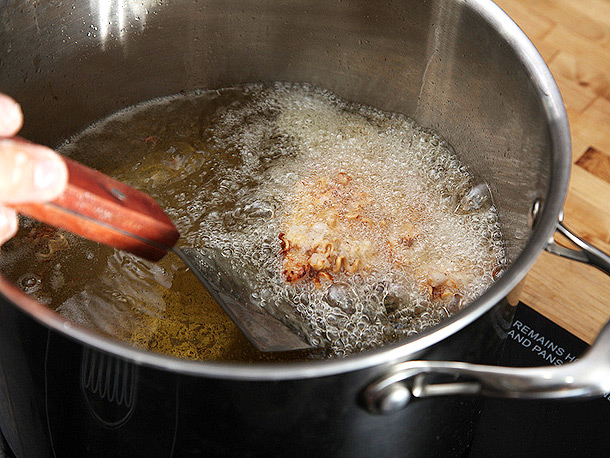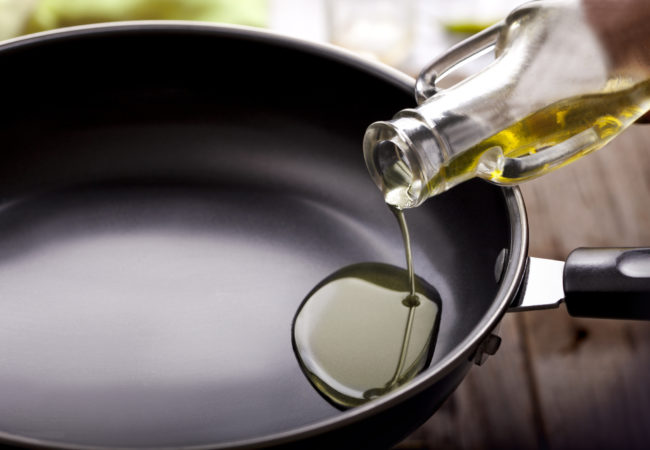How Safe is the Use of Reheated Cooking Oil?
Table of Contents
Oil plays a crucial role in cooking, especially in Indian cuisine, where it is an essential component of various dishes. Frying, known for its quick results, remains a popular method of food preparation.
The Hidden Dangers of Reheated Oil: A Closer Look at Cooking Habits
The consumption of ready-to-eat foods has skyrocketed, leading to increased oil consumption. In both restaurants and homes, oil is often reheated and reused until it is eventually discarded and replaced with fresh oil.
However, the potential health hazards of reheated oil are often overlooked or unknown to many. It is crucial to be aware of the risks associated with this cooking practice for the sake of our well-being.
8 Ways Reheating of Oil can be Harmful
- Chemical Changes: Reheating oil results in chemical changes that produce harmful substances, potentially leading to health issues over time.
- Rancidity: Reusing cooking oil can make it rancid or spoiled, causing strange flavors and odors in the food.
- Free Radicals: Reheating oil generates free radicals, which can attach to healthy cells and contribute to various diseases.
- Carcinogenic Properties: Vegetable oils, when reheated, release high concentrations of chemicals called Aldehydes, which have been linked to cancer, heart disease, and neurodegenerative disorders like Alzheimer’s and Parkinson’s disease.
- Toxic Chemicals: Reheating oil multiple times releases toxic aldehydes, causing harmful reactions with proteins, enzymes, and hormones, leading to serious health problems.
- Formation of Volatile Compounds: Repeated heating of cooking oils leads to the formation of various volatile compounds and polymeric products, some of which can be toxic.
- Off-Flavor and Negative Health Effects: Oxidized volatile products from reheated oils are responsible for off-flavors and adverse effects on human health.
- Trans Fatty Acids: Reheating increases the content of trans fatty acids in oil, which are even more harmful than saturated animal fats. Trans fats raise LDL (bad cholesterol) while simultaneously decreasing HDL (good cholesterol), increasing the risk of cardiovascular diseases, stroke, neurodegenerative disorders, liver issues, and cancer.
Reheating oil can lead to significant health risks, and it is essential to be cautious about its reuse to maintain a healthy diet and lifestyle.
3 Factors Responsible for Oil Damage by Reheating
There is no set number to how many times one can reuse the oil as it depends on factors like which oil was used, how long frying was done, the temperature of oil while frying, the smoke point of oil, storage conditions.
How to Choose Healthy Edible Oil?
Three Factors Responsible for Oil Damage by Reheating:
- Type of Oil: The smoke point of an oil is a crucial factor in determining its suitability for frying. Oils with high smoke points are safer and can be reused for frying and deep-frying. Fats with a smoke point below 200°C are not suitable for deep frying. Oils like sunflower, safflower, soybean, rice bran, peanut, sesame, mustard, and canola have high smoke points. On the other hand, oils with low smoke points like olive oil should be used for sautéing, steaming, stewing, and salad dressings.
- Temperature of Oil while Cooking: The ideal temperature for frying is 375°F (190°C). Frying foods at or above this temperature can lead to the accumulation of harmful compounds like 4-hydroxy-2-trans-nonenal (HNE) in the oil. Using a thermometer can help ensure that the oil is not heated beyond this point. Turning off the heat after cooking is essential, as prolonged exposure to high heat accelerates rancidity.
- Storage of Oil: Fats are prone to oxidation when exposed to light, heat, and oxygen. To preserve the quality of edible oils, it is essential to store them in tightly sealed containers in a cool, dry cupboard away from light and heat sources.
Tips on Choosing Healthy Edible Oil
- Smoke Point: Select oils based on their smoke points and intended use. Oils with high smoke points are suitable for frying, while oils with low smoke points are better for other cooking methods.
- Fatty Acid Composition: Choose oils low in linoleic acids, such as olive oil and canola oil, to reduce the formation of harmful compounds during frying. Avoid oils high in linoleic acid, like safflower oil, grape seed oil, sunflower oil, and corn oil, for deep frying.
- Avoid Mixing Oils: Refrain from mixing different types of oils disproportionately, as it can affect the overall stability and smoke point of the blend.
- Cookware: Avoid using iron or copper pots or pans for frying oil that is to be reused, as these metals can accelerate rancidity.
Tips to make Oil fit for Reheating?
- Limit Oil Usage: Use only the required amount of oil for frying, and try to minimize the quantity to avoid wastage.
- Fresh Oil for Best Results: Using fresh oil every time you fry is the best way to avoid future complications with oil quality. While reusing oil may be more economical, it’s essential to prioritize health and use fresh oil whenever possible.
- Reuse If Properly Handled: If you haven’t overheated the oil during the first use and have stored it properly, it can be reused one more time. However, it’s important to ensure the oil is free from food particles and contaminants.
- Minimize Food Contamination: Food particles in the oil can spoil it sooner than expected. To avoid this, make sure to keep the oil free from excess food particles during the first heating.
- Avoid Adding Salt Before Frying: Adding salt to food before deep-frying should be avoided as it lowers the oil’s smoke point. Once oil starts to smoke, it becomes unsafe and unsuitable for reuse.
- Minimize Oil Usage in Food: Try to minimize the amount of oil used in cooking and consumption. You can also blot excess oil from fried foods using a paper towel to reduce oil intake.
By following these tips, you can promote healthier cooking practices, reduce oil usage, and maintain the quality of the oil for safer and more enjoyable frying experiences.
 Tips to Strain used oil?
Tips to Strain used oil?
- Cool Down the Oil: Allow the leftover oil to cool down to room temperature after frying.
- Transfer to an Airtight Container: Once cooled, transfer the oil into an airtight container to prevent exposure to air, which can lead to oxidation and rancidity.
- Strain the Oil: Before storing, strain the oil through a fine strainer or cheesecloth to remove any food particles and debris that may have accumulated during frying.
- Use Within a Month: To ensure the oil remains fresh and safe for use, try to use it within a month. Over time, even properly stored oil can deteriorate, so using it within a reasonable time frame is advisable.
- Prevent Bacterial Growth: Food particles left in the oil can serve as a food source for bacteria, potentially leading to spoilage. Straining the oil and storing it properly can help minimize the risk of bacterial growth.
By following these steps, you can extend the shelf life of leftover oil and reduce the chances of any health-related complications from using rancid or contaminated oil.
Tips to Store used Oil
Refrigerate Used Oil: Refrigerating or freezing used oil is crucial to inhibit bacterial growth. Unrefrigerated oil can become anaerobic, creating an environment conducive to the growth of Clostridium botulinum, a bacterium responsible for causing botulism, a severe and potentially fatal form of food poisoning.
By refrigerating the used oil, you can significantly reduce the risk of bacterial contamination and ensure the safety of the oil for future use. Properly stored oil can be reused while minimizing health hazards associated with spoiled or contaminated oil.
What to check before using Reusing oil?
Checking Used Oil Before Reuse:
- Color and Thickness: Before reusing, examine the used oil’s color and thickness. If the oil appears dark and has become greasy or sticky compared to its usual state, it is an indication that the oil has deteriorated and it’s time to change it.
- Rancidity: Discard oil that has become rancid, which means it has become old and stale. Rancid oil can have an off-putting odor and taste, making it unsuitable for further use.
- Smoky or Fishy Smell: If the oil emits a smoky odor or smells like fish when heated, it is best to discard the batch. Such odors could be signs of oil breakdown and the development of potentially harmful compounds.
Importance of Proper Ventilation: Ensuring proper ventilation in kitchens is crucial as it helps reduce the impact of potentially toxic volatile compounds released during cooking, especially during frying. Adequate ventilation helps maintain a healthy and safe cooking environment by expelling airborne pollutants and odors.
By being attentive to these visual and sensory indicators and promoting proper kitchen ventilation, you can maintain the quality and safety of the cooking oil and the overall cooking environment.
Thus, it is seen that using reheated oil is not always good. There are number of ways one can incorporate to reduce the damage to oil while heating.




